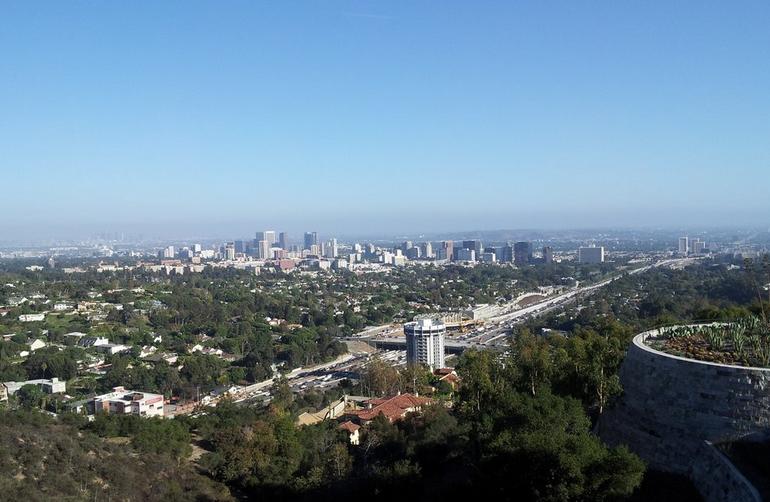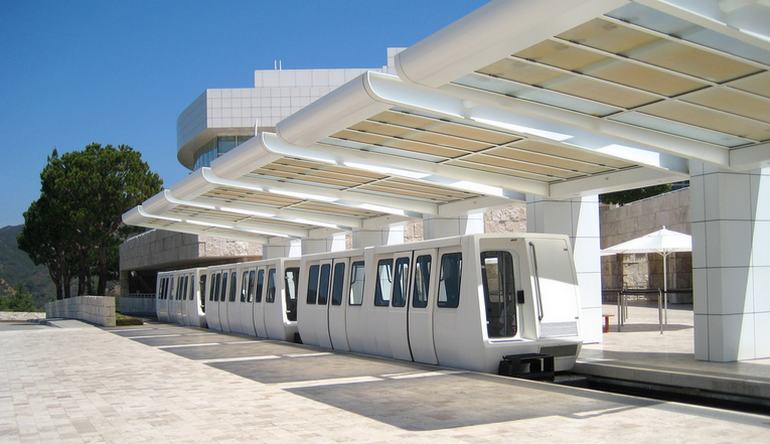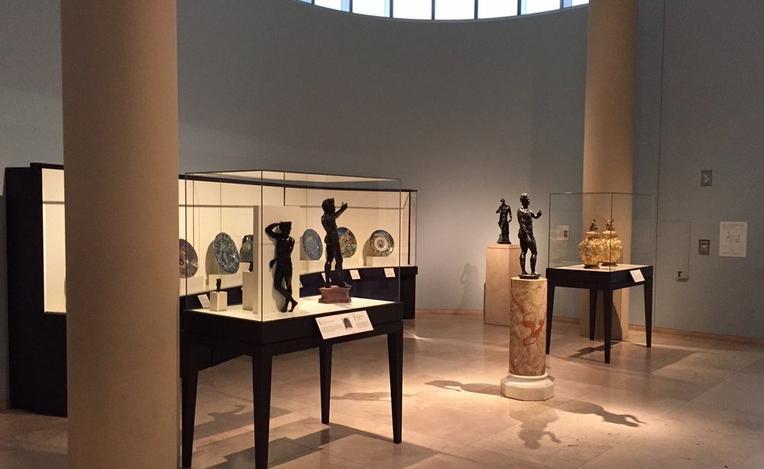
The Getty Center is a fun day trip where anyone can find something to enjoy. The museum is located in Brentwood (Los Angeles), California, and features a collection of European paintings, drawings, and sculptures. Also featured are a group of 19th and 20th-century American and European photographs.
The Center is located on a 24-acre hilltop campus that is part of a larger 110-acre site in the Santa Monica Mountains, 900 feet above the 405 freeways. The surrounding areas encompass a fantastic and breathtaking 600 acres of pristine natural woodlands.

The Los Angeles skyline is visible from many points, and on a clear day, it is possible to see the San Bernardino Mountains to the east and the Pacific Ocean to the west. Plans were first announced in 1983, and Richard Meier was chosen to be the architect the following year.
After years of delays, construction began in 1989, with the Center finally opening its doors in December 1997. Building estimates stand at an astounding $1.3 billion. It’s an architectural marvel and worth a trip for any student.
A modernist blend (with an homage to Neutra and Wright) of concrete and steel; 1.2 million square feet of beige-colored travertine stone from Italy was split along its natural grain, revealing the texture of fossilized leaves, feathers, and branches.

Accenting the buildings are 40,000 off-white, enamel-clad aluminum panels. Light reflects off expansive sheets of glass and creates varying effects depending on the time of day. Numerous fountains provide calming sounds, with plenty of benches to sit and admire the surroundings.
When you first arrive, you enter through the main gate. From there, you go towards what appears to be a subway stop at the rear of the garage. It’s an automated three-car, cable-pulled tram that will take you on a scenic ride to the hilltop campus.

When you first arrive, you enter through the main gate. From there, you go towards what appears to be a subway stop at the rear of the garage. It’s an automated three-car, cable-pulled tram that will take you on a scenic ride to the hilltop campus.
This is where your first glimpse of what’s to come as the ride ascends the 900-foot mountain and offers a view of the freeway below. Not for the faint of heart or those who fear heights.
As you first enter the campus, you will notice five pavilions; the North, East, South, And West and the Exhibitions Pavilion. The Pavilion is for traveling art collections and various Foundation artworks.

The permanent collection is displayed chronologically throughout the other four pavilions: the north houses the oldest art while the west houses the newest. The first-floor galleries house light-sensitive art, such as illuminated manuscripts, furniture, or photography, which rotate and which cannot be on permanent display.
The second floor is connected by a series of glass-enclosed bridges and open terraces, both offering views of the surrounding hillsides and central plaza. A tree-lined walkway descends to the main garden, completed in 1997 and is 134,000-square feet.
A stream of water crosses the walkway, through the plaza, and over a stone waterfall into a round pool. More than 500 varieties of plants are used with a constantly changing selection. The Getty Research Institute is a research library containing over 900,000 volumes of rare books, manuscripts, periodicals, artists’ notebooks, auction catalogs, and two million photographs of art and architecture.

Many informational campus tours are offered; the Garden Tour is a 45-minute trip through the Getty gardens. The Architecture Tour is a daily and lasts 45 minutes. The Collection Highlights Tour provides an overview of major works.
Exhibition Tour: The Spectacular Art of Jean-Léon Gérôme runs daily through September 12. Gérôme ranks among the most successful artists of the nineteenth century. His spectacular pictures made him one of France’s most honored painters.

The Family Room offers a fun introduction to art study with hands-on activities like mask and sculpture making and art treasure hunts. The programs are held throughout the year and are free.
The Sketching Gallery, Located on the upper level of the East Pavilion, allows you to sketch from original paintings and casts of sculptures from the Museum’s collection.
Visitors can cultivate their appreciation of the art on display with the Getty Guide, an interactive audio player system available at the Museum Entrance Hall and at several posts in the north, east, and south pavilions.
Researchers interested in studying the collection of photographs can arrange an appointment at the Photographs Study Room. Admission to Getty Center and its exhibitions is FREE.

Where is the Getty Center
The museum opens at 10 am every day but Monday, when it is closed. The museum closes at 5:30 pm every day. Most major holidays are observed.
Group tours are encouraged. If yours has 15 or more, please call ahead to arrange parking and a guide. The Getty Center may not be suitable for children under 12.
Parking is available at the center for a fee per car. For the eco-conscious, public transportation makes it easy to reach the Getty. Metro Rapid Line 761 stops at the main gate on Sepulveda Boulevard. Address: 1200 Getty Center Dr. Los Angeles, CA 90049 Closed on Mondays.
I’ll stay from Dec12 till Dec17,2017 in Anaheim Marriott• I’m intrested in art and want to visit the valuable art museums in LA like Getty Center, Getty Villa , LACMA, MOCA , Broad Museum and in Pasadena PMCA and Norton Simon Museum• I don’t like rent a Car • How can I manage it? Could you help me by planning my vacation in Southern California• I say thanks in advance •
Hello
Southern California without a car is not an easy task. We have hundreds of things to do in SoCal on our site but unless you stick to the major attractions public transportation is limited.
You can send us an email at info@daytrippen.com for itinerary suggestions.
Thanks for visiting DayTrippen.com